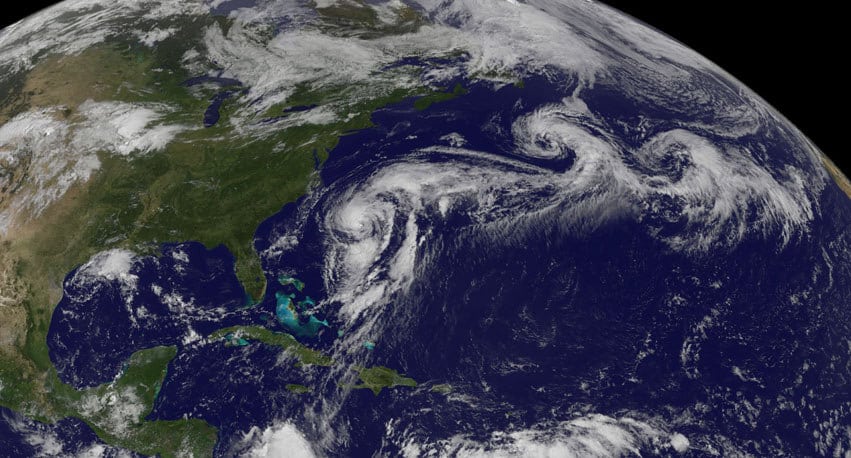Wildfires, rising sea levels, flooding, increased storms — you’ve probably already seen how natural disasters, boosted by climate change, have impacted our world.
The effects of climate change are already bearing out this year. The National Oceanic and Atmosphere Administration (NOAA) predicted a 65% chance of an above-average hurricane season, with 14 to 21 named storms, the potential for six to 10 hurricanes and three to six major hurricanes.
Tech currently provides a major tool in the natural disaster-fighting toolbox. The Science Applications International Corporation (SAIC), a Reston, Virginia-based IT firm (which, ICYMI, implemented a four-day work week policy last fall), is making moves to provide better climate tech interventions. Last year, it hired Stephen Ambrose in the newly created position of chief climate scientist, and it works with such entities as NASA, the Department of Defense (DOD) and NOAA to mitigate climate change’s impact.
The bread and butter of the company’s climate tech work lie in artificial intelligence and machine learning, Ambrose told Technical.ly. SAIC’s current initiatives include projects with the US Navy, determining how sea-level rise will impact naval infrastructure; and with NASA and the Forest Service to gear up for wildfire season. For the latter, Ambrose said SAIC is measuring and attempting to understand the conditions that cause fires, prescribed burns and the environmental justice components around how fires impact different communities.
Alongside AI and machine learning, the company is developing virtual reality, drone work and a technology called “artificial intuition,” which helps firefighters understand the massive amounts of data collected and how to react to the disasters at the moment.
“When you look at firefighting, you’re in a battlefield,” Ambrose said. “You’re in this battlefield situation where you have the enemy, the fire, coming at you head-on, and you have to understand how to react to that, how to protect yourself and the community from that.”
Jay Meil, SAIC’s director of data science and artificial intelligence, said that the firm also looks at the environmental impacts of geopolitical situations. For force readiness, entities like the DOD and intelligence community have to manage complex rescues in natural disasters like tsunamis and rising sea levels.
Still, he noted, machine learning and AI are simply tools that can work together, given the complexity of climate impacts.
“We have achieved these tools and technologies that can solve very specific problems in scope, but across very large scale,” Meil said. “You can put a lot of these different models together, build them like Lego blocks to solve more problems and complex problems such as things like climate change. But each particular model solves a very specific problem.”
SAIC also does a lot of work in drone technology, or “unmanned or uninhabited aerial vehicles.” Using the drone and satellite data, the company employs a product called the “sensor web” that creates situational awareness with thermal and visible sensors. It can then relay that information to those on the ground, like firefighters battling wildfire flames.
Getting information to first responders (also collected with a “virtual tactical assistant,” which collects cloud data from field vehicles like ATVs) is crucial, Ambrose said. This can help first responders and others closer to these situations understand whether evacuation or other procedures are worth the cost.
Meil said that this ability to process data on the scene, also known as edge computing, is crucial during natural disasters. The data doesn’t need to be sent across the cloud to a large data center and, instead, runs data inference right then and there (keeping data online is also the latest addition to disaster relief plans).
Abilities like that, he noted, make tech an ideal partner for disaster relief. With the sheer amount of data made available daily, it’s crucial to find the best and fastest way to process as needed alongside those on the frontlines of disaster relief.
“From satellites, from ships, from Earth observation systems on the ground, radar, the data and forecasts that are put out every day and archived — there’s a tremendous amount of data to understand,” Ambrose said. “Technology has got to be able to help to put that data together, to help visualize that.”







